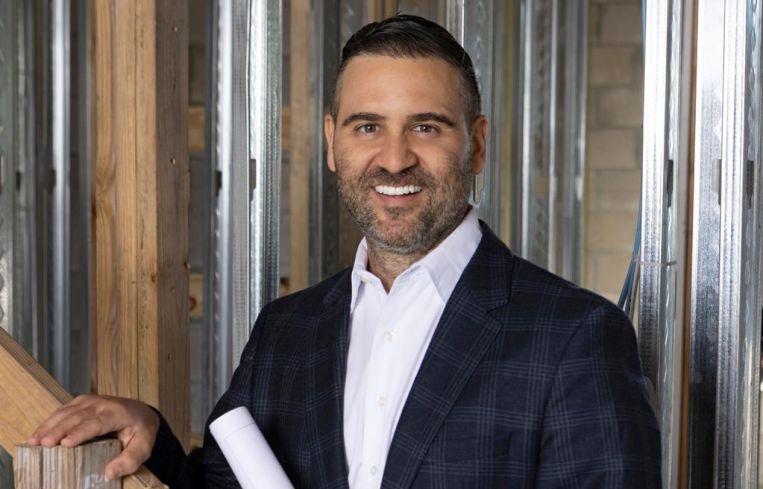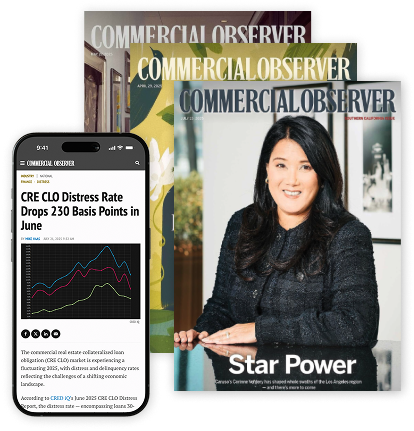Misha Ezratti of South Florida’s GL Homes: 5 Questions
By Jeff Ostrowski September 26, 2025 2:15 pm
reprints
GL Homes is best known as a major homebuilder, but the Sunrise, Fla.-based company also has moved into commercial development.
In the most recent example, GL Homes recently opened a retail center at its Valencia Parc at Riverland development in Port St. Lucie, Fla. That project, which is slated to also add 11,000 homes, is anchored by a 48,000-square-foot Publix.
“We like to control all the aspects of what’s going in and around our developments,” said Misha Ezratti, GL Homes’ president.
Commercial Observer caught up with Ezratti to discuss the firm’s moves into retail development and the benefits of combining the asset classes.
The following conversation has been edited for length and clarity.
Commercial Observer: You’re known as a homebuilder, but you’ve also been developing retail centers at your residential projects. Why do that rather than outsource the work?
Misha Ezratti: We’ve had a philosophy where, if we can, we carve out 20 to 30 acres adjacent to one of our residential projects. You bring in the goods and services that will serve the residents of that area.
We feel that from the land purchase to the home warranty process, we want to be good stewards of the land, we want to have quality and have our reputation carried through, and we feel like the retail and commercial offerings are the same.
We want to have the best-quality, best-looking shopping centers. We want to make sure that people are keeping it at the level that reflects the area, and we don’t want somebody to buy it and just let it get run down. So we feel like that reflects on us, and goes hand in hand with the rooftops that are being built out there.
What was the learning curve for figuring out how to do a successful commercial project?
We brought in some expert-level talent, maybe 15 years ago. We brought in Michael Friedman as the head of our field commercial division. He was a former Stiles guy who had decades of experience with office and shopping centers. That helped us up the learning curve after we already had started our first one in Mirarmar. Michael was able to bring in a lot of the connections that he had with different tenants.
We were able to establish a footprint of what a center should look like between inline and freestanding buildings, connections with banks, with retailers, food, and have the right mix of mom-and-pop and national retailers. Now that we’ve done a number of them, we feel like we’ve got it figured out. People know that we do a high-quality job.
We always build from the ground up. We’re not buying existing centers. And everything is brand new, clean, nice. We do the land development ourselves, so there’s no problems with drainage or roads or anything like that. It’s been tremendous for us.
Was there anything that was surprising to you or any distinctions between this type of development as opposed to your bread-and-butter of residential development?
I think the focus on cost and making sure that you look at every penny in commercial is much more prevalent than when you’re doing 500 or 1,000 homes and you can spread the cost of landscaping or facades or features over that many units. The scale becomes much bigger versus in a shopping center.
In commercial, if you save, then your tenants are saving on the CAM (common area maintenance), and they’re much happier. In the homes, what usually happens is when you spend, you end up getting more back, because when you’re improving the amenities, you’re improving the landscaping, you’re improving the entry, people usually want to pay more for the house because they see the value in it. You’re definitely watching costs a lot more in commercial.
Switching to the residential market, Florida is cooling quite a bit. What are you seeing on that front?
It’s definitely not as hot as it was during the pandemic, which we all know, and it’s more of a normal market right now. Prices for existing homes have been stubborn for a few years, and now, just in the past few months, people feel like a more normal reality set in where they have to price in terms of how they can move their existing home.
So that allows them to get rid of their existing home and feel confident in buying a new home. That’s been the biggest headwind for most homebuilders is that during the pandemic, people knew they could sell their existing home any time while the new house was under construction. And now, people are like, “OK, I’m gonna wait till I sell my existing home until I buy.” And they had a little bit of an unrealistic expectations of what their pricing could be.
Lately, in the past three, four months since the summer started, people are starting to adjust and say, “Maybe I’ll take a little less.” And so once they’re able to sell that home, then they’re coming in and they’re excited about a new home purchase.
What’s your biggest challenge?
Affordability. People are just waiting. They might be able to afford the mortgage, but there’s just a psychological component. Mortgage rates of 6.5 percent to 7 percent aren’t that high historically. But they’re saying, “I don’t really want to spend that much, and if only my rates could be in the 4s or the 5s, then I can do more upgrades or go from the single story to the bigger two-story that I want.”
But we’re bullish on the market. We think that with the season that will come soon, and the potential of New Yorkers moving down here, depending on their mayoral election, and interest rates being on the decrease, we feel Florida is well positioned to rebound from a little bit of a weaker market.
Jeff Ostrowski can be reached at jostrowski@commercialobserver.com.



